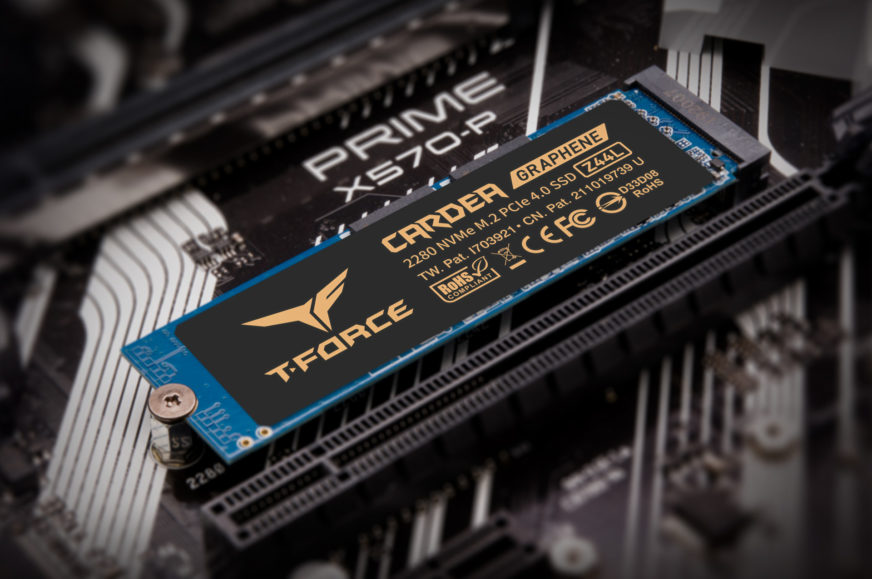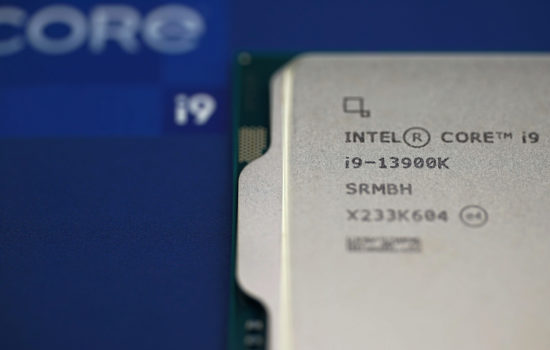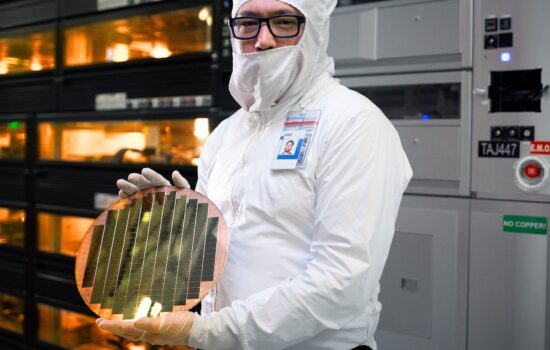Z790 boards and Raptor Lake still without M.2 slots supporting PCIe 5.0 ×4, contrary to expectations
Curiously, even though Intel Raptor Lake CPUs are only three months away, there’s virtually no word on the 700-series chipsets and motherboards that should come with the new CPUs. Last week, however, a leaked document was posted on the Internet, in which Intel introduces the Raptor Lake platform, the CPU and the new chipsets. The most surprising bit is that the new boards won’t bring the one feature that was most expected of them.
The slide leaked on Baidu is pretty similar to past desktop platform schematics leaked before, and is probably from an Intel presentation intended for partners. According to it, the Raptor Lake or 13th generation Core desktop processors for LGA 1700 socket will officially support faster DDR5-5600 memory (Alder Lake only officially supports DDR5-4800, although XMP modules can run at higher clock speeds).
The document also confirms that these processors still support DDR4-3200 memory (higher speeds are not officially supported with the older standard). There have been some unofficial rumors that some new boards for DDR4 memory with 700 series chipsets will be coming out.
Surprisingly, PCIe connectivity from the processor is not changed. According to this document, Raptor Lake processors will still provide PCI Express 5.0 speed just for the sixteen lanes dedicated to graphics (it’s a ×16 interface, optionally supporting a split for ×8/×8). Raptor Lake was expected to provide an additional PCIe 5.0 ×4 interface for the primary M.2 slot, to allow for the connection of high-performance NVMe SSDs with Gen5 speed. But this platform diagram states that the interface for NVMe SSDs will still remain only on PCI Express 4.0 ×4, unchanged from what Alder Lake processors can do.
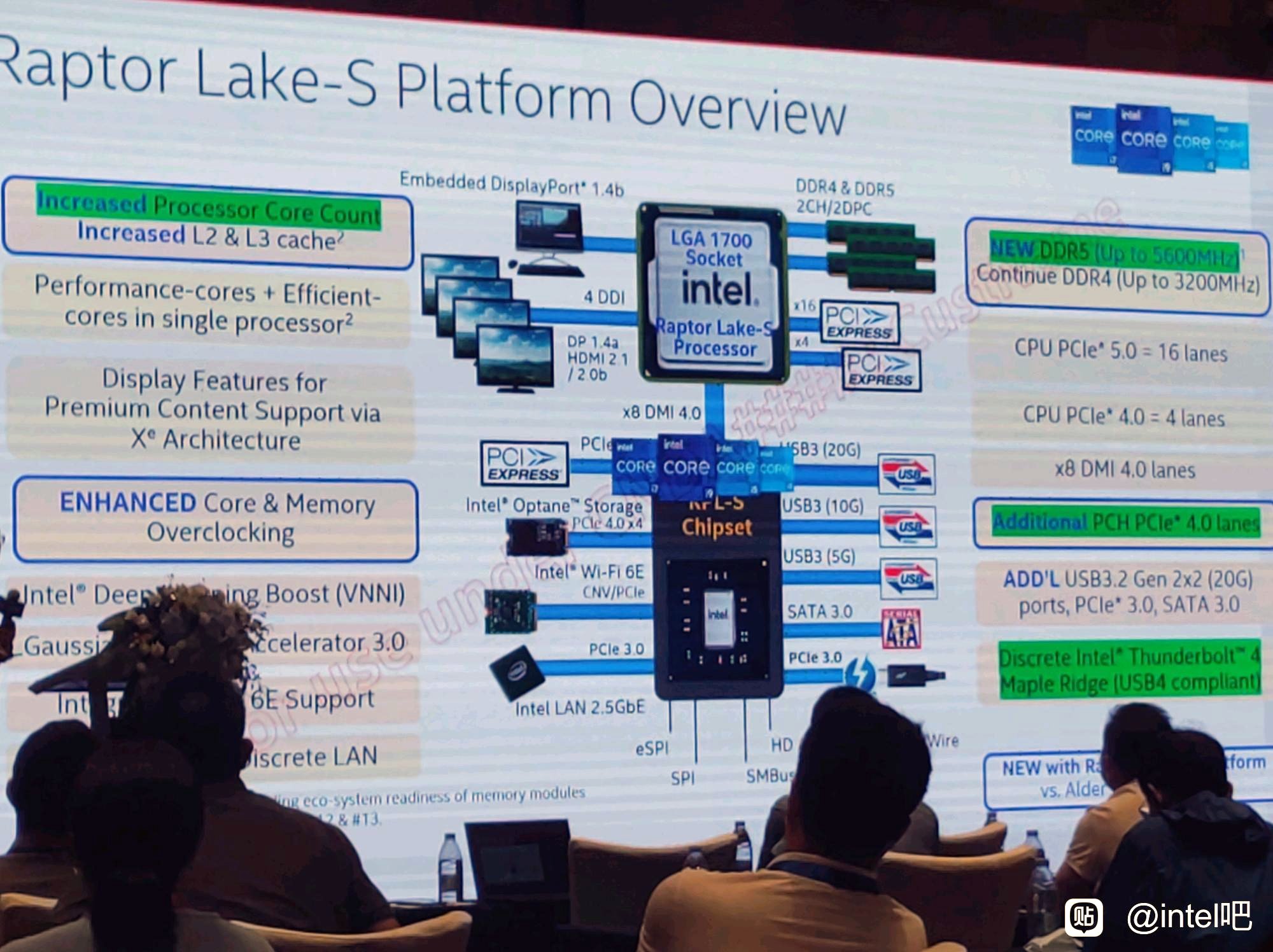
It’s hard to say whether the information that Raptor Lake will get PCIe 5.0 ×4 circulating previously was wrong from the start, or whether there was a change in Intel’s plans. SSDs are more sensitive to correct operation than GPUs, and it’s theoretically possible that there was some validation issue, meaning the hardware does have support, but it won’t be used. The leaked document is supposed to be from a presentation that took place just recently (July 5), so it’s probably not an outdated slide from when Intel wasn’t sure if PCIe 5.0 for SSDs would be implemented successfully, and therefore wasn’t committing to the feature yet.
However, if the information from this diagram is confirmed, then it means that the Z790 boards will again probably not have M.2 slots with PCIe 5.0 connectivity. There will be only one way to add it, which is for the board manufacturers to divert some of the Gen5 PCIe lanes dedicated to GPU for M.2 slot, but then using that slot would cut-down the interface for dedicated graphics to eight lanes. The other alternative is simply installing the SSD modules into an add-in-card adapter for an ×16 or ×8 PCIe slot, but that obviously still has the same consequences.
In this case, Intel’s platform would be at a certain disadvantage against AMD’s competing one. Ryzen 7000 processors for socket AM5 will support PCIe 5.0 ×16 for GPUs and also two M.2 interfaces with PCIe 5.0 ×4 connectivity (one of the four-lane interfaces can be used to connect a USB4 or Thunderbolt 4 controller, but then it will not be available). Although PCIe 5.0 or ×8/×8 slots for GPUs will usually only be available on the most expensive boards with the X670E chipset (and the possible B650E variant, which has been unofficially rumored), the PCIe 5.0 ×4 interface in the M.2 SSD slot should also be available even on cheaper boards with the B650 chipset.
Read more: SSDs using PCIe 5.0 will be up to twice as fast, see details of the Phison E26 controller
More fast PCIe 4.0 lanes from the chipset
The document doesn’t name the 700 series chipsets specifically yet and doesn’t give the names of the specific versions (according to older rumors, the B760, H770 and Z790 chipsets will be released) or how will they differ from each other in functionality. Intel so far refers to the new chipsets collectively only as the “RPL-S chipset”.
According to the presentation, these chipsets will include new features compared to the 600 series, but there’s no particularly dramatic changes. USB support remains at the level of USB 3.2 Gen 2×2 (SuperSpeed USB 20 Gbps) via USB-C, so there is still no integrated USB4 or Thunderbolt, these can optionally be provided by an add-in controller. The connection to the processor is DMI 4.0 ×8, more or less equivalent to PCIe 4.0 ×8.
What should be new with the 700 series chipsets is the number of PCI Express 4.0 lanes that the chipset itself provides. The new generation of chipsets should have more of them than the 600 generation (Z690 provides 12). Unfortunately, the exact numbers are not disclosed, just as we don’t know if there will be any increase only for the Z790, or also for the cheaper variants (of which we are probably most interested in the B760).
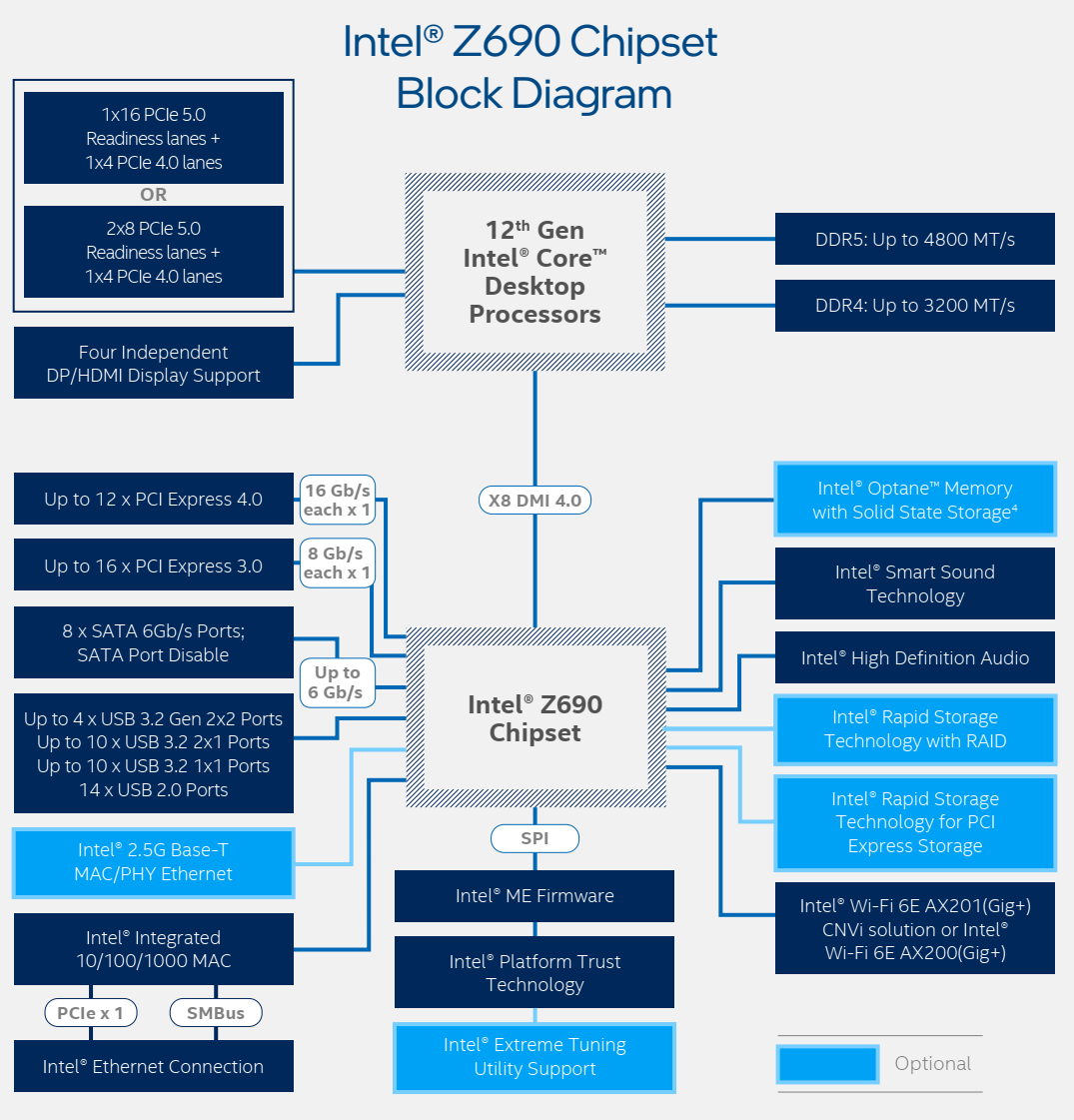
The slide doesn’t mention increased IPC, will Raptor Lake be like Tiger Lake?
This document specifically highlights what is new about the Raptor Lake platform. For the processors themselves, in addition to faster memory, it highlights the higher number of cores (we have known for some time that Raptor Lake will further expand the big.LITTLE concept and will have 8 big and up to 16 efficient E-Cores). It is also mentioned that the overclocking capabilities of CPU cores and memory will be improved, so overclockers will probably get some new tools to try.
On the other hand, Intel doesn’t state anywhere that the architecture is new or that it has higher performance per 1 MHz (a.k.a. better IPC). It is only stated that the core has a larger L2 cache (2 MB for large cores, 4 MB for clusters of small cores) and L3 (due to the higher core count). While it’s not written in stone anywhere that Intel has to mandatorily disclose such architectural improvements in their documents if they are present, this is a possible indication that the large core architecture in Raptor Lake won’t have any other improvements that could increase IPC (beyond the effect of larger cache).
Although the core has a new name (Raptor Cove versus Golden Cove in Alder Lake), it might again be something similar to what we saw with the Tiger Lake processors – they also had a core with a new name (Willow Cove) and were expected to have up to 8 % increase in IPC, but then it turned out that the bigger caches were pretty much the only changes (Tiger Lake/Wilow Cove entailed increasing L2 from 512 kB to 1.25 MB at the cost of worse latency and increasing L3 cache blocks from 2 MB to 3 MB per core). And the IPC typically didn’t grow much, although that was dependent on specific applications.
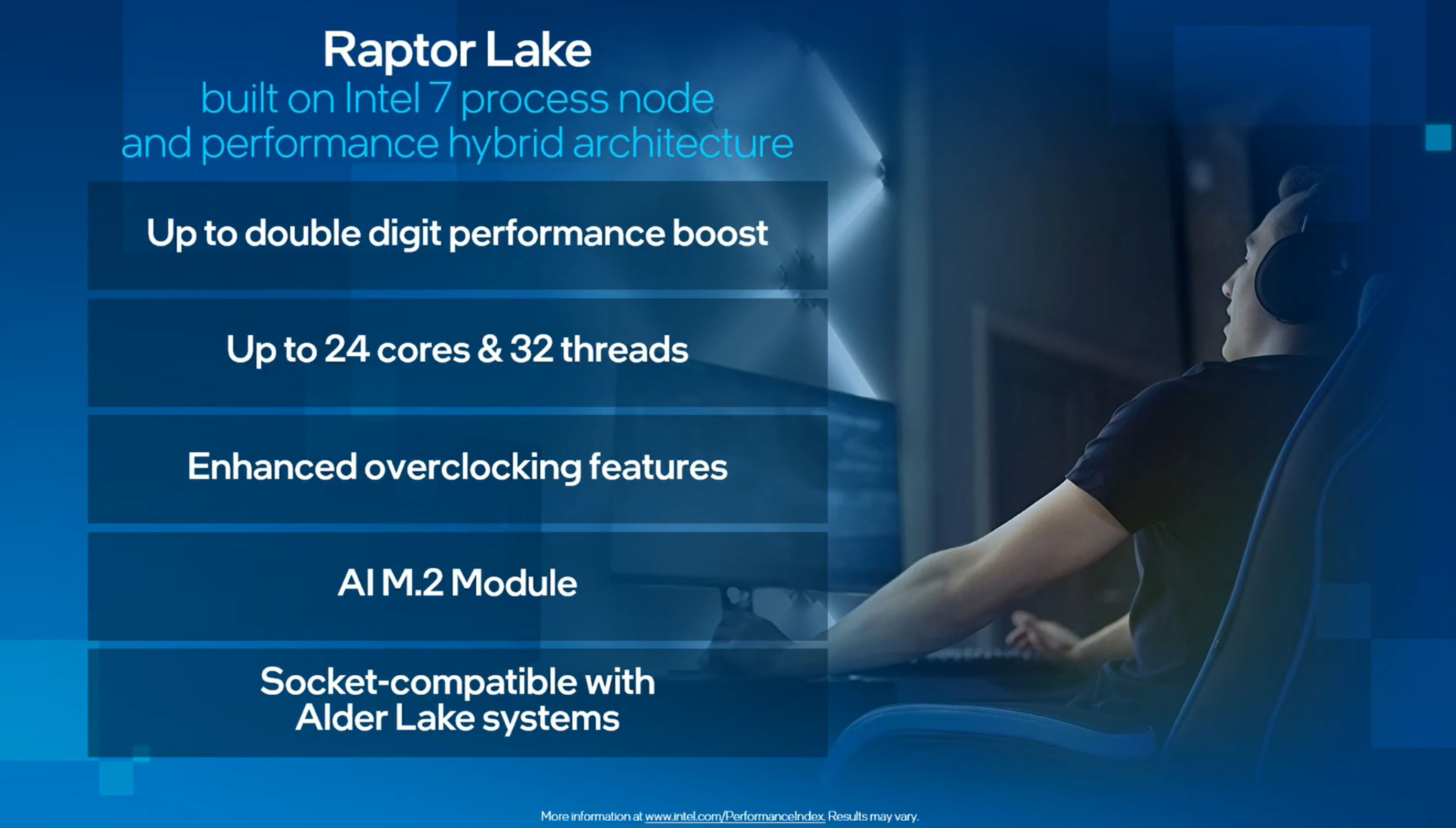
However, the single-core performance of the new Core 13th generation is still expected to go up as Raptor Lake will reach higher clock speeds. Intel itself has promised increases of “up to double-digit percentages”, and from sample leaks, it appears that the Core i9-13900K could have a clock speed boost for single-threaded applications of at least 5.5 GHz.
Read more: Intel Raptor Lake: Core i9-13900K will have at least 5.5 GHz boost, 33 % higher MT performance
Sources: Baidu, HXL, VideoCardz
English translation and edit by Jozef Dudáš, original text by Jan Olšan, editor for Cnews.cz
⠀⠀
- Contents
- Z790 boards and Raptor Lake still without M.2 slots supporting PCIe 5.0 ×4, contrary to expectations





